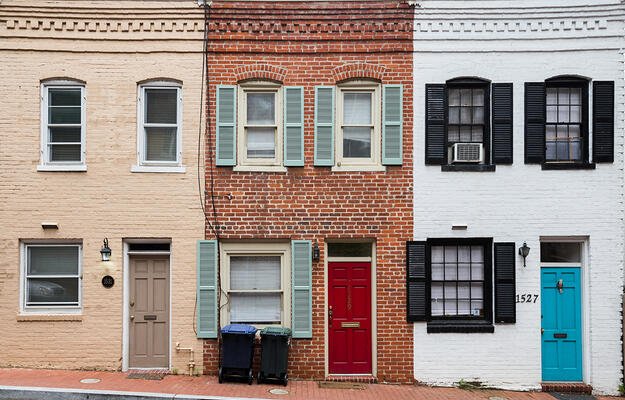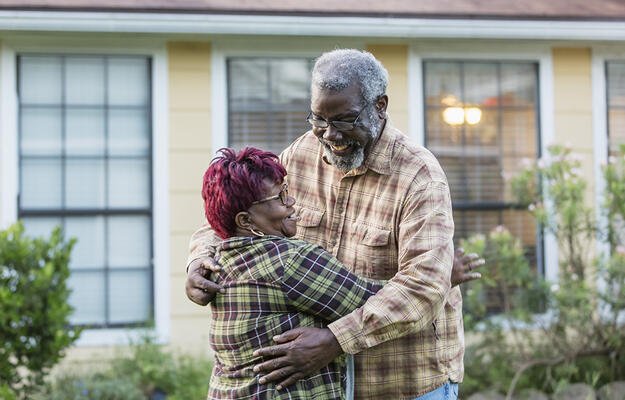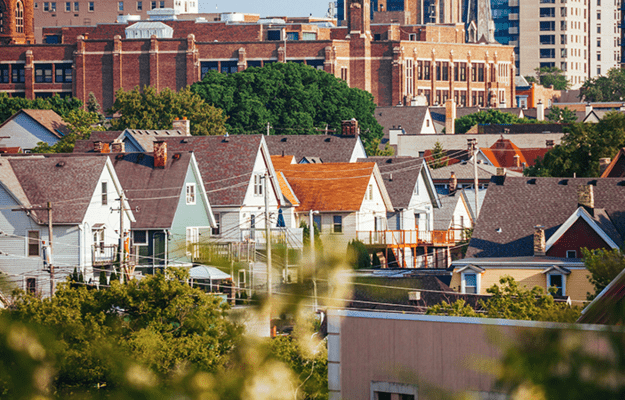
(Vitor Monthay/Unsplash)
Five Ways to Combat Extreme Temperatures on Urban Heat Islands
Across the globe, record-breaking high temperatures are becoming increasingly normal. As temperatures rise, people with access to reliable and affordable air conditioning and cooling methods can stay safe, but those who live in heat islands without access to cooling are at increased risk for heat exposure and its effects on health. What can help keep residents safer as extreme heat increases?
Climate change brings extreme heat that not everyone experiences equally
One of the widely felt effects of climate change are record-high temperatures and frequent heat waves. As greenhouse gas emissions increase, experts predict heat will worsen, especially for residents of the Sun Belt and urban areas. The National Climate Assessment estimates that the United States could see 20–30 more 90°F days per year. An extreme heat model published by the First Street Foundation predicts that by 2023, 50 counties will experience temperatures above 125°F, and a third of Americans will face these record highs by 2053.
Many factors can lead to heat islands, including larger swaths of asphalt roads, higher building densities, and reduced vegetation and tree cover. These areas absorb the sun’s heat and reduce shade, causing daytime temperatures to be up to 7°F higher and up to 5°F higher at night than surrounding areas. Heavily developed areas with tall buildings or narrow streets block wind from providing natural cooling, while nearby factories and high volumes of vehicles make the air even hotter.
Black Americans and people with lower household incomes are most likely to live in heat islands. Research shows neighborhoods with predominately Black residents and residents with low incomes are often several degrees hotter than in suburban areas just a few zip codes away. Racist housing and lending practices, redlining, and segregation led to disinvestment in neighborhoods of color and have contributed to inequitable access to greenery and cooling infrastructure. Compounded by relatively higher residential cooling costs, Black and Indigenous people, people of color, and households with low incomes face disproportionate heat effects.
Heat islands create health and safety challenges
Heat waves can be particularly dangerous for heat island residents. In addition to heat cramps, exhaustion, and stroke (PDF), exposure to high temperatures increases mortality rates, especially for vulnerable populations such as children and older residents. Dehydration during heat waves can heighten chances of heat-related illness in pregnant people and children. While exposed to dangerous heat, people ages 65 and older have increased risk of cardiovascular- and respiratory-related death.
These disparities are greatest among households living on heat islands. A 2019 study found that Black people and other people of color are already most likely to live in neighborhoods and communities with high environmental toxin exposures, which contributes to higher asthma and cancer mortality rates relative to those living in majority-white areas. Exposure to extreme heat can exacerbate these conditions, potentially widening the racial health gap.
How can communities protect their residents from extreme heat?
Many cities, like New York City, New York; Pacoima, California; and Philadelphia, Pennsylvania, have begun mitigating extreme heat and offer local government some lessons. Here are five ways they can create cooler, safer, and more sustainable landscapes.
- Focus on pavement. The GAF Cool Community Project in Pacoima, a majority-Latinx neighborhood, is coating 10 city blocks and 2 recreational areas with a water-based epoxy pavement coating to reduce surface temperatures. In the future, the project may install solar shingles on nearby houses. Residents hope to bring their community together while directly addressing the risks of heat-related harm.
- Engage the neighborhood. Equitable tree-planting programs that provide trees and tree maintenance to Black and low-income neighborhoods for little to no cost can help lower temperatures and increase health benefits. The Charlotte, North Carolina, NeighborWoods partnership has successfully targeted (PDF) low-income areas and areas with primarily residents of color. The city is now on its way to 50 percent tree-canopy coverage by 2050.
- Create welcoming cooling centers. Many urban areas deploy cooling campaigns that remind residents to hydrate and encourage them to go to air conditioned libraries and recreation centers. Baltimore opens community and senior centers (PDF) throughout the city during extreme heat events and offers transportation for seniors.
However, public health evaluations have found that “cooling centers [are] underused and understudied.” Some reasons for this include inadequate access to public transportation and residents preferring the safety and comfort of their own homes. To reverse the trend, cities can survey residents to understand what factors keep them from utilizing these centers and what could make them more accessible.
For residents who can’t visit cooling centers, making air conditioning affordable would help. Local governments could explore providing vouchers for discounted units or partnering with an organization to provide free units to those who need them most.
- Encourage housing developers and property managers to design for heat. Housing developers can play a significant role in mitigating heat islands. Outfitting new apartments and structures, especially affordable housing units, with energy-efficient cooling devices can lower energy costs for cost-burdened residents. Solar electric systems, evaporative cooling systems, and geothermal heat pumps are much more energy efficient than traditional air conditioning units.
Developers can also retrofit properties to include cool roofs, which use light-colored solar reflectance materials to absorb less solar energy and heat than a traditional roof. Up to 50°F cooler, these roofs can help reduce household energy bills and slow the formation of smog. NYC CoolRoofs is a private-public partnership that offers cool-roof installations with little to no cost to residents. Available for free to recreational centers, nonprofit organizations, and residents in affordable or low-income housing, these reflective rooftops can lower building temperatures up to 30 percent, reduce greenhouse gas emissions, and cool off the surrounding areas by 5°F.
- Develop housing more sustainably. Developers of large housing communities can employ pedestrian-friendly design by limiting the amount of asphalt roads and, instead, installing spray grounds and reflective bike lanes. This approach would not only improve walkability and create communal space for residents, but residents nearby could also benefit from potentially lower temperatures and better air quality.


